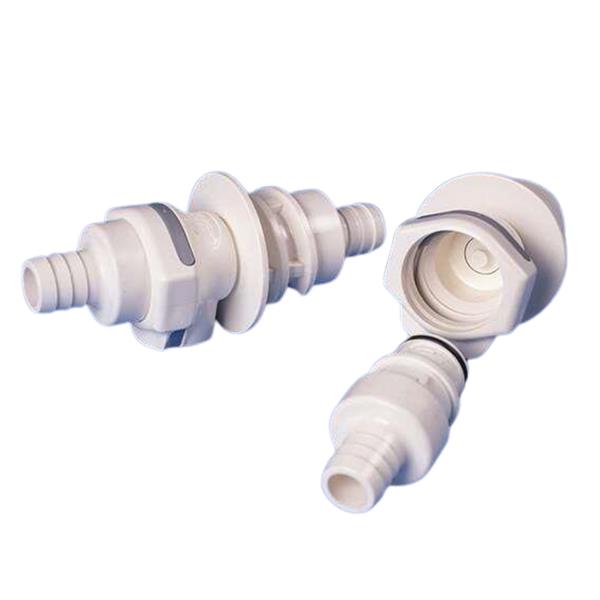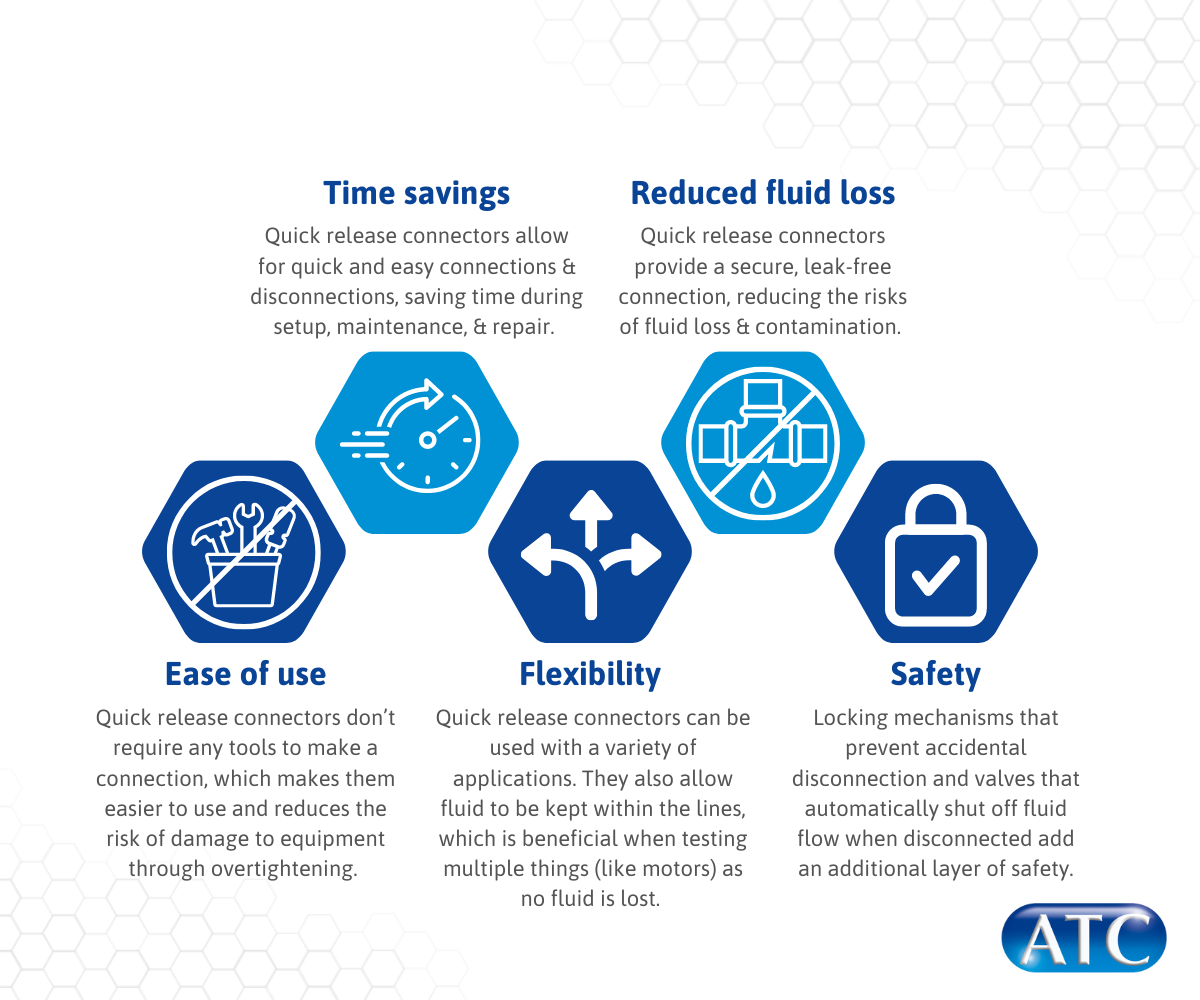
Quick release connectors can be a convenient way to connect
and disconnect process cooling equipment. These connectors allow for quick and
easy access to the cooling system without the need for tools or lengthy set up.
When using quick release connectors with process cooling
equipment, it is important to ensure that the connectors are compatible with
the specific equipment being used. This includes matching the connector size
and type to the equipment’s inlet and outlet ports, as well as ensuring that the
connector materials are compatible with the fluids being used in the system. Quick
release connectors chosen by Applied Thermal Control are compatible with all of
the heat transfer fluids that we recommend and can be fitted to all of our
units. ATC will mount one part of the connector to the chiller, and supply the
corresponding part in the accessory pack, for connecting to your tubing.
Quick release connectors typically consist of two main
components, a male plug and a female socket. The male plug typically has a
protruding pin or sleeve that engages with a locking mechanism in the female
socket, securing the two components together.
To connect the two components, the male plug is simply
inserted into the female socket and the locking mechanism engages, creating a
secure and leak-free connection. To disconnect, the locking mechanism is
released by pushing a button, allowing the two components to be separated.
Quick release connectors used by Applied Thermal Control also
incorporate additional features to enhance performance and safety, such as
valves that automatically shut off the flow of fluid when the connectors are
disconnected, and locking mechanisms to prevent accidental disconnection.
There are several benefits to using quick release
connectors, including:

While quick release connectors offer many benefits, there
are also some potential drawbacks to consider:
Compatibility
- Quick release connectors may not be compatible
with all types of equipment. It’s important to ensure that the connectors and
matched to the specific application to prevent leaks, malfunctions or other
issues.
Cost
- Quick release connectors may be more expensive
than traditional threaded connections.
Limited pressure and temperature range
- Some quick release connectors have limitations
on the maximum pressure and temperature that they can handle, which may
restrict their use in high-pressure or high-temperature applications.
Maintenance
- Quick release connectors require maintenance to
ensure proper function and prevent leaks. This includes inspecting connectors
for damage, wear, and contamination, and replacing components as necessary.